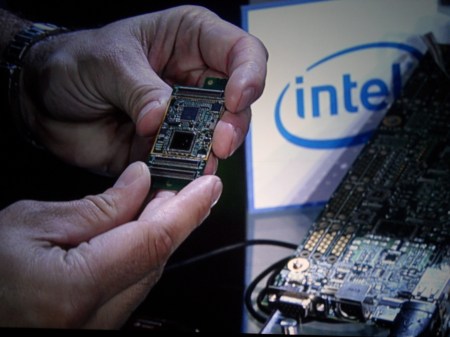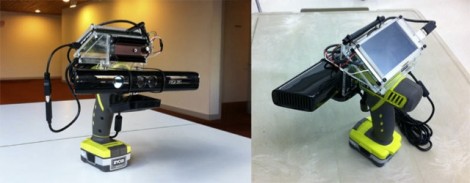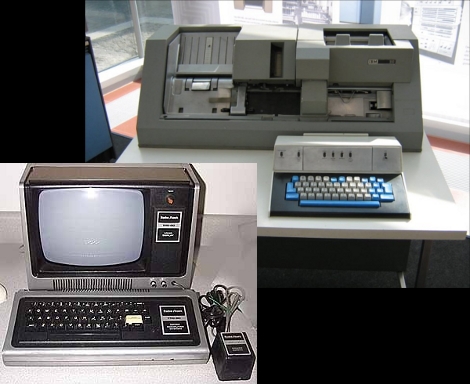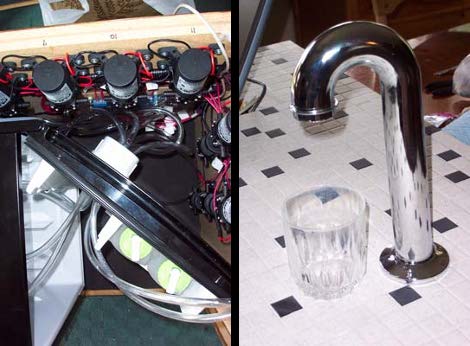 With the Pre-CES Keynote made by [Steve Ballmer], the announcement came that the next iteration of their operating system being available in SOC specific form. This will lead to windows being able to run a very diverse hardware set in a much more efficient manner than it does right now. Microsoft displayed 4 different versions of what the next generation prototypes are from 4 different manufacturers but there has been no work done yet on the GUI for SOC as [Ballmer] was very clear to mention that more than a couple of times. Some photos of the prototypes can be found after the break!
With the Pre-CES Keynote made by [Steve Ballmer], the announcement came that the next iteration of their operating system being available in SOC specific form. This will lead to windows being able to run a very diverse hardware set in a much more efficient manner than it does right now. Microsoft displayed 4 different versions of what the next generation prototypes are from 4 different manufacturers but there has been no work done yet on the GUI for SOC as [Ballmer] was very clear to mention that more than a couple of times. Some photos of the prototypes can be found after the break!
Day: January 6, 2011
Drill-based Kinect Camera

[Brett Graham] and [David Cox] are taking the Kinect out into the world thanks to this handheld hack they call the Drill of Depth. Apparently, the Kinect wants 12V at 1A which is quite easy to provide with a rechargeable power tool like this Ryobi drill. The setup features a 4.3″ touchscreen display, connected to the Gumstix Overo Air that is running Linux. They claim that there’s a “legitimate scientific reason” for building the device but they’re not sharing it yet.
So what would you use this for? We wonder if it would be possible to roll a GPS into the mix, then use post processing from the captured data to recreate the environment in a virtual setting? Imagine if a weekend spent walking around campus and processing the results let you model your University and make it an add-on level for your favorite game. Or perhaps this could be paired with a regular camera to generate high-quality 3D skinning data for Google Earth. That’s what we came up with, what do you think?
Making Punch Card Programming A Snap

About thirty years ago [H. P. Friedrichs] pulled off a hack that greatly improved the process of programming with punch cards. At the time, his school had just two IBM 029 keypunch machines. One of them is shown in the upper right and it uses a keyboard to choose which parts of each card should be punched out. This was time-consuming, and one misplaced keystroke could ruin the card that you were working on. Since you had to sit at the machine and type in your source code these machines were almost always in use.
But wait, the school acquired a dozen of the TRS-80 computers seen in the lower left. They were meant to be used when teaching BASIC, but [HPF] hatched a plan to put them to task for punch card generation. He built his own interface hardware that connected to the expansion port of the new hardware. Using his custom interface a student could create a virtual card deck that could be rearranged and revised to correct mistakes in the source code. The hardware then allows the virtual deck to be dumped in to the punching machine. This broke the bottleneck caused by students sitting at the punch card terminal.
We think that [HPF] sent in this project after seeing the antiquated hardware from that 1970’s calculator. These hacks of yore are a blast to revisit so don’t be afraid to tip us off if you know of a juicy one.
Kitchen Island Makes A Mean Cocktail

[John Creswell] built a heck of an automatic bartender in a kitchen island. The image on the left shows a top-down view of the inside of the cabinet. There’s a mini-fridge where the liquids are stored, and around the perimeter of the cabinet [John] mounted sixteen pumps to get the beverage up into your cup. Drinks are dispensed from the lighted serving fixture on the right by selecting your preferred cocktail from a computerized menu. According to his writeup the project was finished about five years ago, making us wonder if he’s tackled any upgrades such as adding support for smartphones.
[Thanks Zack]










